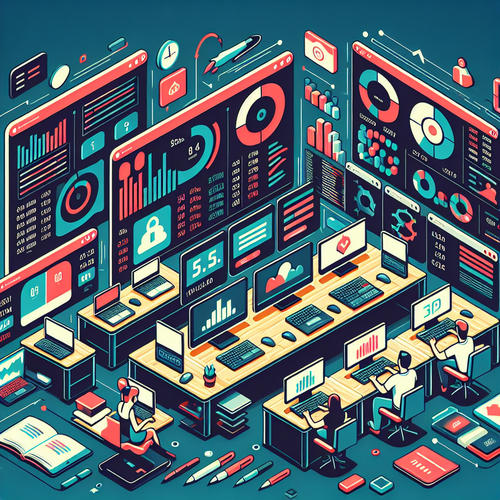
Integrating Generative AI into Productivity Suites for Enterprises
Integrating Generative AI into Productivity Suites for Enterprises
In today’s fast-paced business environment, enterprises are continually seeking ways to enhance productivity and streamline workflows. One of the emerging trends is the integration of generative AI into productivity suites. This tutorial will explore how generative AI can be utilized within enterprise productivity tools, providing step-by-step guidance for successful implementation.
Prerequisites
- Understanding of generative AI concepts
- Familiarity with productivity tools such as Microsoft 365, Google Workspace, or other enterprise software
- Basic knowledge of project management and team collaboration dynamics
Step 1: Understanding Generative AI
Generative AI refers to algorithms that can generate new content, including text, images, and more, based on a given input. Examples include OpenAI’s GPT (for text generation) and DALL-E (for image generation). Understanding how these technologies work is essential for leveraging them in a productivity context.
Step 2: Identifying Use Cases
Start by identifying specific areas in your productivity suite where generative AI can make an impact. Common use cases include:
- Content Generation: Automate the creation of reports, emails, and presentations.
- Data Analysis and Insights: Generate insights from data sets, summarizing key findings.
- Task Automation: Streamline repetitive tasks through AI-driven workflows.
- Collaboration Enhancements: Facilitate brainstorming sessions by generating creative ideas and solutions.
Step 3: Selecting the Right Tools
Different productivity suites offer varying levels of generative AI integration. For instance, Microsoft 365 incorporates features like Microsoft Copilot, while Google Workspace has tools for smart email responses and document suggestions. Assess which suite aligns best with your team’s needs.
Step 4: Implementation
Once you have identified the use cases and tools, it’s time to implement generative AI into your workflows. Follow these steps:
- Integration: Utilize APIs or built-in features to integrate generative AI tools into your productivity suite. For example, Microsoft Copilot allows users to access AI functionalities directly within the platform.
- Training Sessions: Conduct workshops or training sessions to familiarize employees with the new tools. Highlight how generative AI can augment their daily tasks.
- Feedback Mechanism: Establish a feedback mechanism to assess the effectiveness of the AI integration. This could be through surveys or regular check-ins with the teams.
Step 5: Evaluating Performance
After implementation, it’s crucial to evaluate the performance and impact of the generative AI tools. Key performance indicators (KPIs) to consider include:
- Increased efficiency in content creation
- Reduction in task completion time
- Employee satisfaction and adoption rates
- Quality of AI-generated outputs
Troubleshooting Common Issues
While integrating generative AI, you may encounter some challenges. Here are a few common issues and their solutions:
- Lack of User Adoption: If employees resist using the new tools, provide additional training and emphasize the benefits of integration.
- Quality of AI Output: If the content generated is not meeting expectations, refine the prompts or parameters used in the generative AI model.
- Technical Issues: Ensure that your IT team is prepared for any technical glitches or integration problems that may arise.
Summary Checklist
- Understand generative AI and its capabilities.
- Identify specific use cases for your enterprise.
- Select the appropriate productivity tools with generative AI features.
- Implement and train staff on the new tools.
- Evaluate performance and make necessary adjustments.
- Monitor user feedback and engagement continuously.
Integrating generative AI into your enterprise’s productivity suite can transform workflows, making tasks easier and more efficient. With thoughtful implementation, this powerful technology can lead to significant benefits for your organization.
For more insights on AI tools and technology trends in business, check out our article on Top 5 AI Tools for Improving Writing Style.














